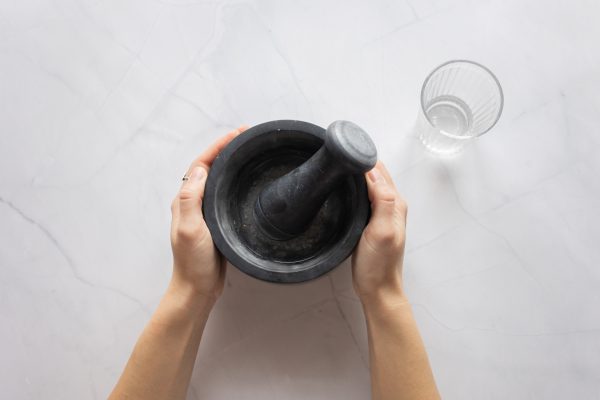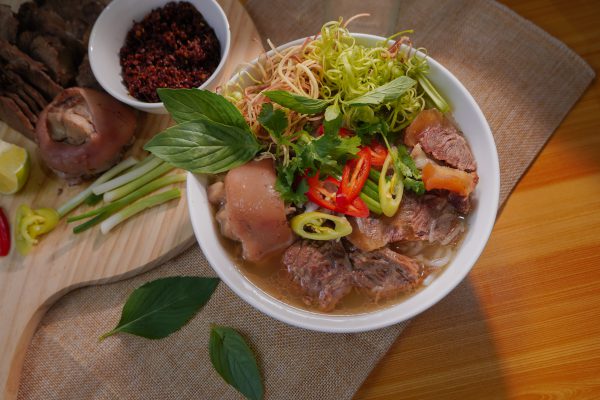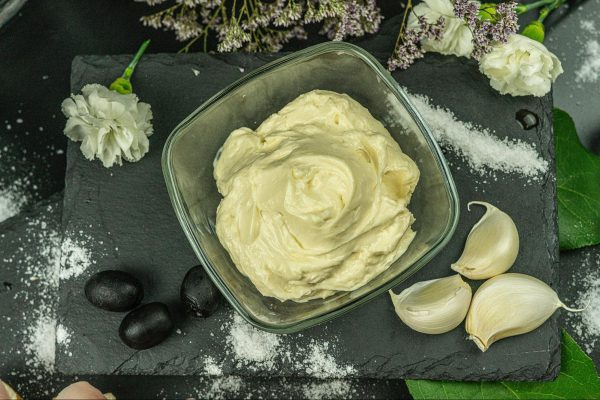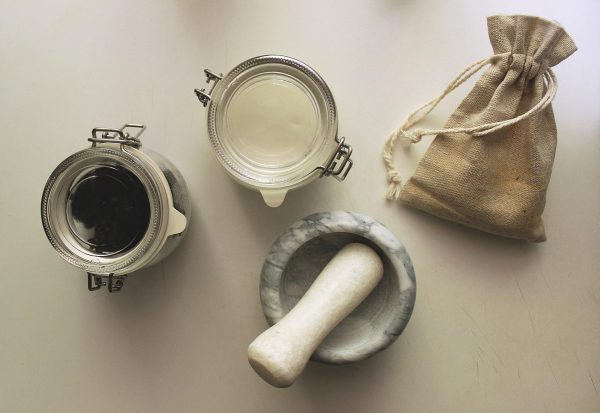Last Updated on September 27, 2022
Although hand mixers and immersion blenders are sometimes used interchangeably for certain tasks, they were actually designed for different purposes.
A hand mixer is the kitchen tool you reach for to whip eggs or cream, mix cookie dough and cake batter, or make condiments like mayonnaise. An immersion blender, on the other hand, is perfect for purees, soups, and emulsifying ingredients together.
In this guide, we’ll break down the advantages of both of these must-have kitchen tools and give you some ideas on when to use which.
What Is an Immersion Blender?
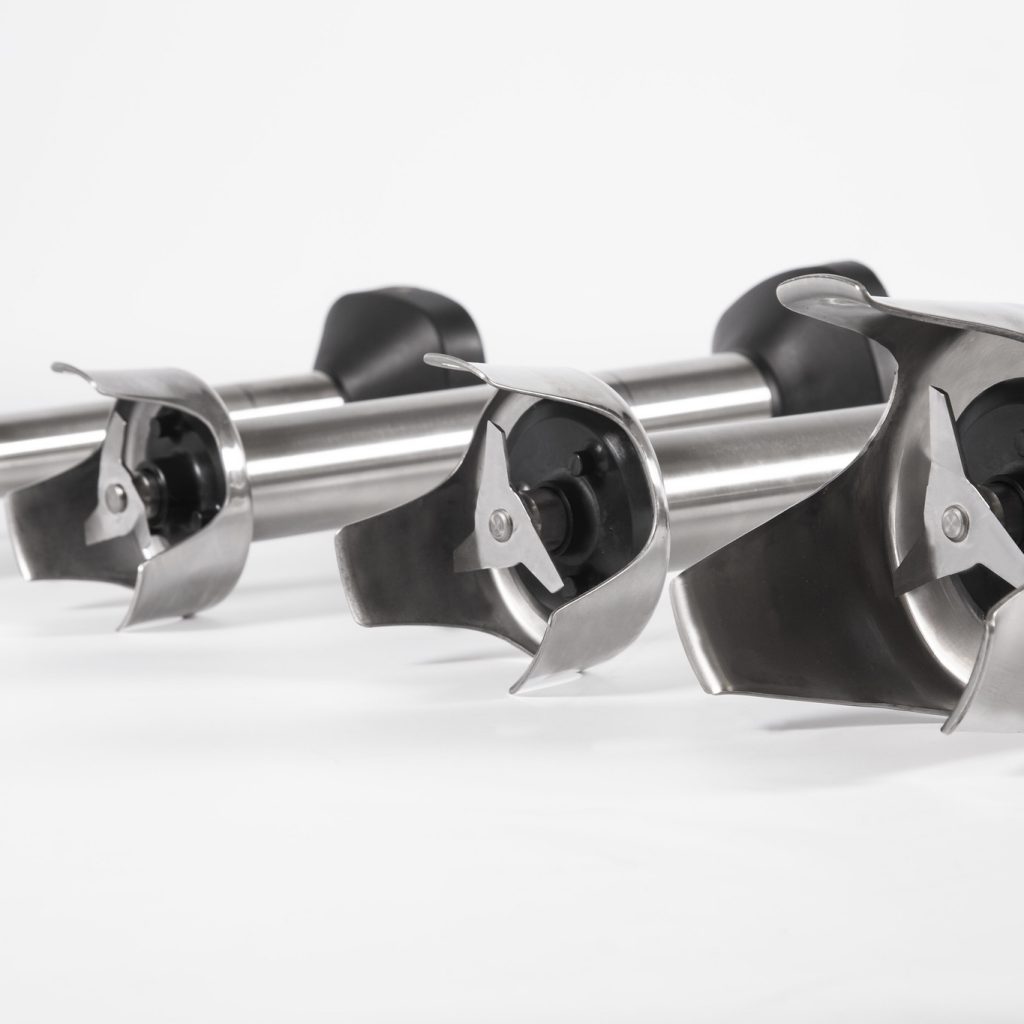
Immersion blenders are portable and compact blenders that look like sticks with blades on one end. They’re more affordable and easier to store than a countertop blender. Most immersion blenders are small enough to fit in a drawer under the counter.
The stainless steel blades break down the ingredients and mix them at a rate that’s impossible to achieve manually. However, they are not as powerful as jug blenders, so you can’t use them to crush ice or make a silky-smooth paste.
This downside aside, immersion blenders are perfect for blending soups, sauces, milkshakes, or baby food or making chunky pastes like hummus and guacamole.
Why Do You Need an Immersion Blender?
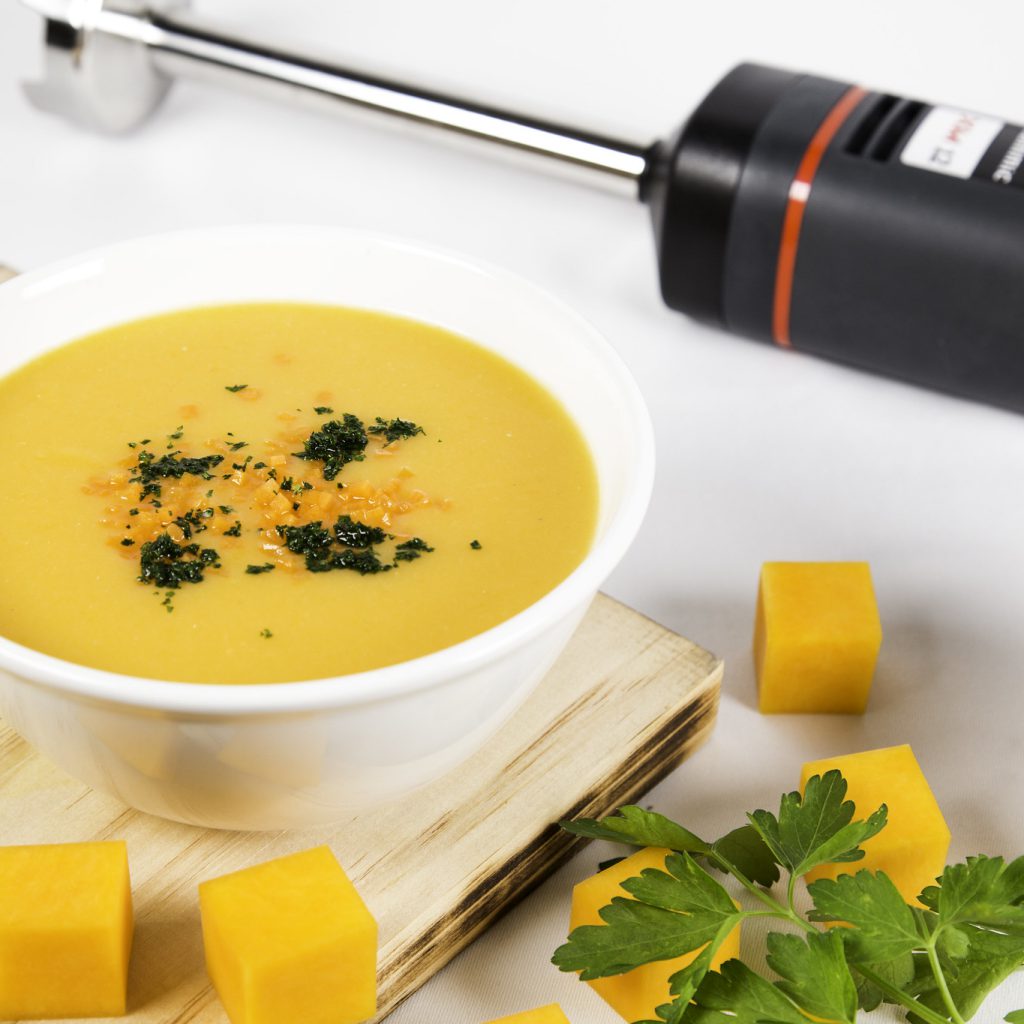
Immersion blenders work a lot like food processors and countertop blenders. But unlike the other two, an immersion blender can be submerged in any bowl and is especially handy for combining small amounts of food.
They’re wonderful for blending sauces or purees directly on the stove, which saves you the trouble of pulling your sauce off the stove and transferring it into a jug to blend first. Since you don’t have to use extra bowls for blending, you only need to clean your blender and your saucepan at the end.
On top of these practical advantages, here are some of the important features of immersion blenders:
- Immersion blenders are very quiet compared to countertop blenders, even at their highest speed.
- You can opt for cordless immersion blenders with rechargeable batteries.
- Some immersion blenders come with additional attachments, such as whisks, blades, and choppers, increasing their efficacy.
What Can You Make With an Immersion Blender?
Here’s a list of the most common things you can make with an immersion blender:
- Purees
- Mashed potatoes
- Sauces and salsas
- Soups
- Condiments (such as mayonnaise)
- Smoothies and milkshakes (without ice)
- Spreads and dips (e.g., hummus or guacamole)
- Whipped creams (if you have a whisk attachment)
What Is a Hand Mixer?
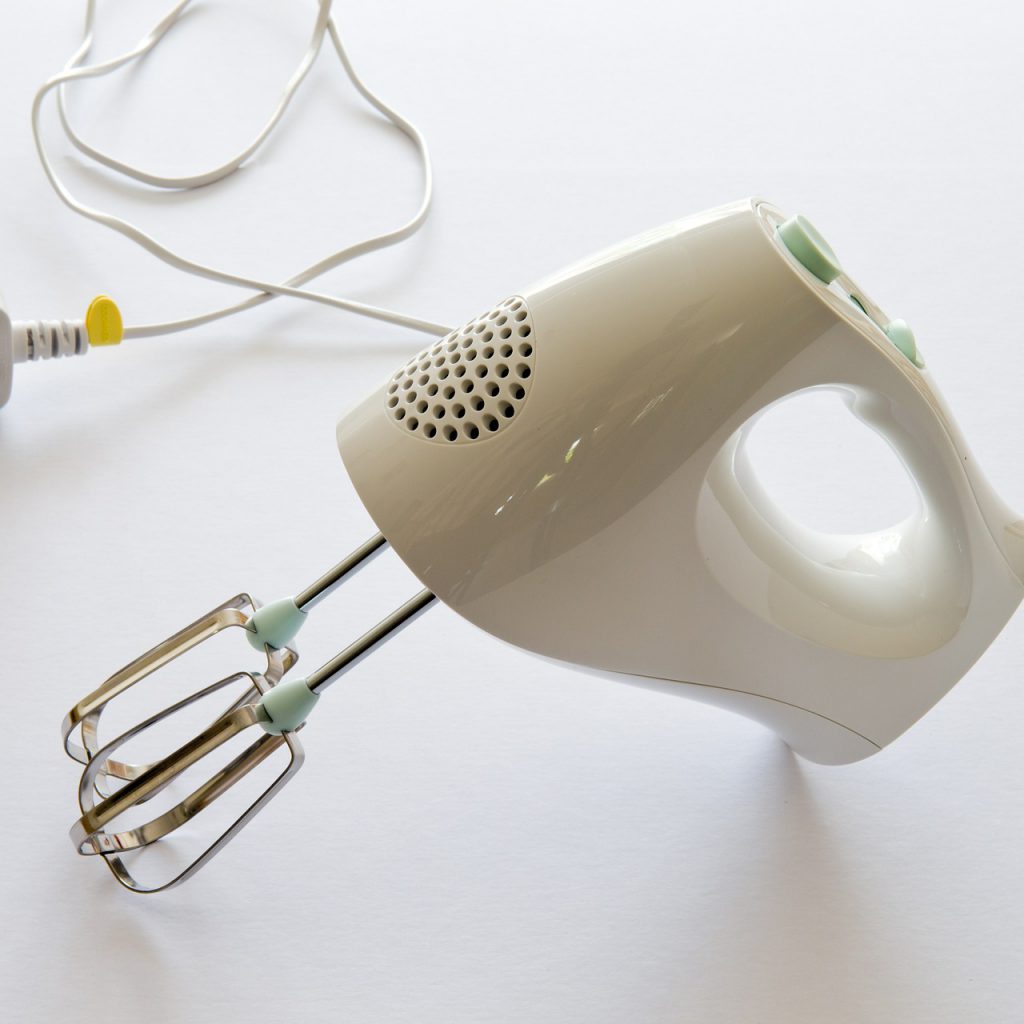
A hand mixer is perfect for blending liquid ingredients with powders and grains like flour and sugar. This tool can be a great assistant in the kitchen, especially if you’re into making cakes and pastries.
A hand mixer typically has two beater heads for mixing liquids, such as cream, egg, oil, and milk, with powders like flour and sugar. They are mostly designed to be small and ergonomic, unlike stationary mixers such as KitchenAid, which are designed for more heavy-duty mixing, whipping, or kneading.
A stand mixer comes with a flat beater, a dough hook, and other whisk attachments that help you knead the dough and make more intricate pastries. On the other hand, a hand mixer typically only has beaters. Some models come with dough hooks and whisks too.
However, you can’t knead heavy dough with it due to its low motor power and the fact that you’re the one who’s holding it and the bowl at the same time. For such tasks, you should opt for a stand mixer. But if you’re an occasional cake baker, a hand mixer is all you need.
Why Do You Need a Hand Mixer?
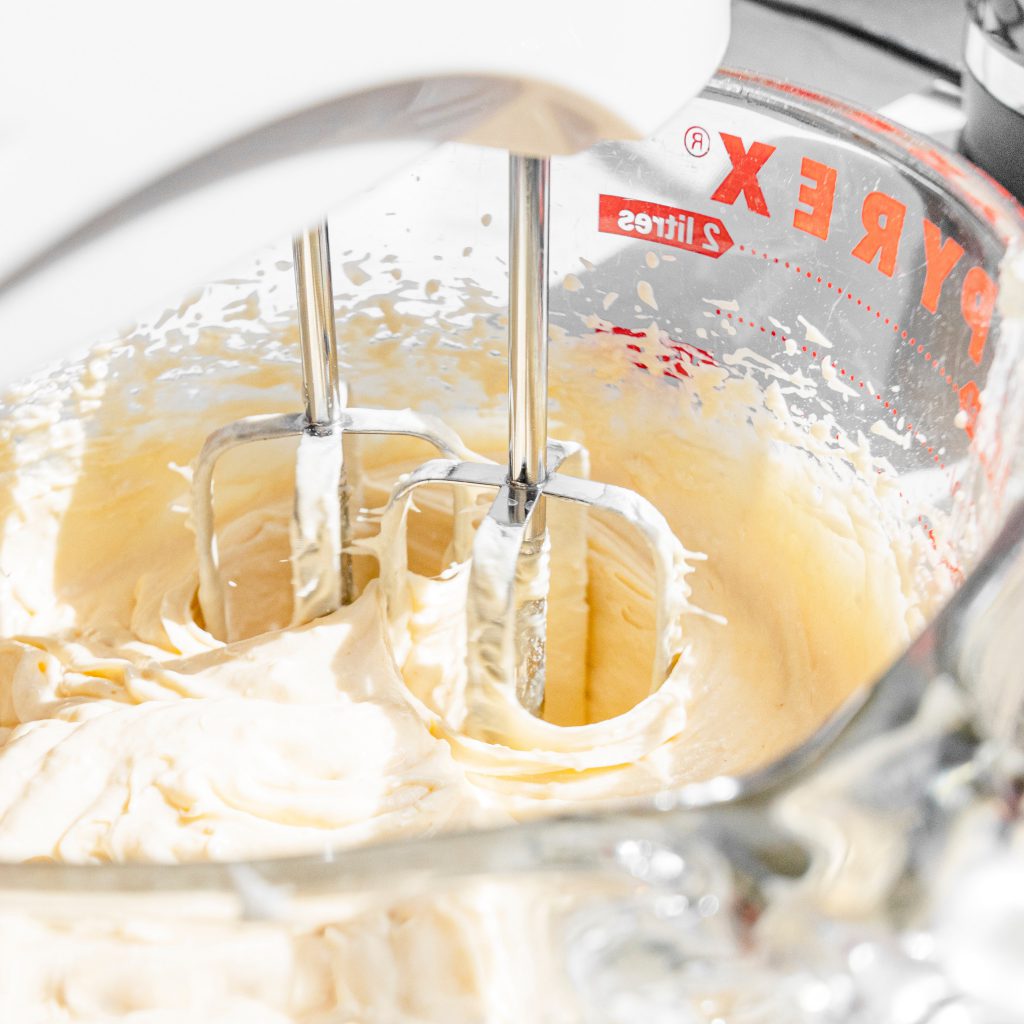
A hand mixer is really useful for mixing small batches of cream or batter because it’s light and easy to use. Similar to immersion blenders, they are portable and you can use them to whisk right in the pot you’re cooking the food in. However, you can’t chop and make a puree with a hand mixer.
Some hand mixer models also come with rechargeable batteries so you don’t even need to worry about cables. This is especially useful if you’re short on countertop space. Here are some other important features of hand mixers:
- Hand mixers are maneuverable.
- They are small and take up less space than a stand mixer and its equipment.
- Hand mixers work in most mixing bowls and pots that are deep enough.
Although you can use an immersion blender with a whisk attachment instead of a hand mixer to make cake batter or whipped cream, the double whisks of a hand mixer allow you to whip up a fluffy cloudy batter much faster.
What Can You Make With a Hand Mixer?
- Cake batters
- Pudding
- Whipped cream
- Cookie dough
When to Use Which?
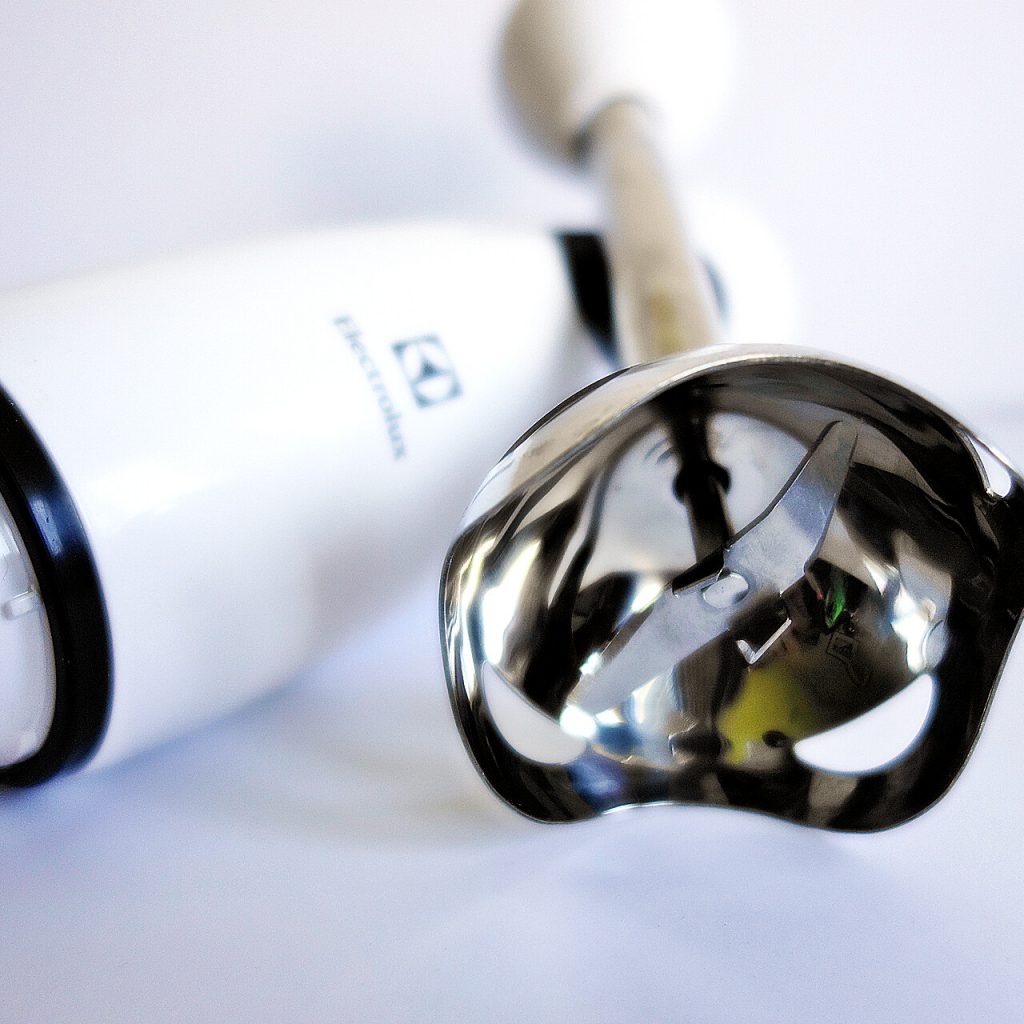
A hand mixer and a blender can be used interchangeably in some cases. You can, for example, make pancake dough or mix a cocktail with both of them. However, you need a blender for chopping vegetables, fruit, or other solid foods and a mixer if you want to whip your batter quickly.
Moreover, the blender blades make it harder to obtain the homogeneous and airy mixture you need for a cake that rises smoothly unless your blender comes with whisks, in which case it becomes almost as good as a hand mixer.
Differences and Similarities Between Hand Mixers and Immersion Blenders
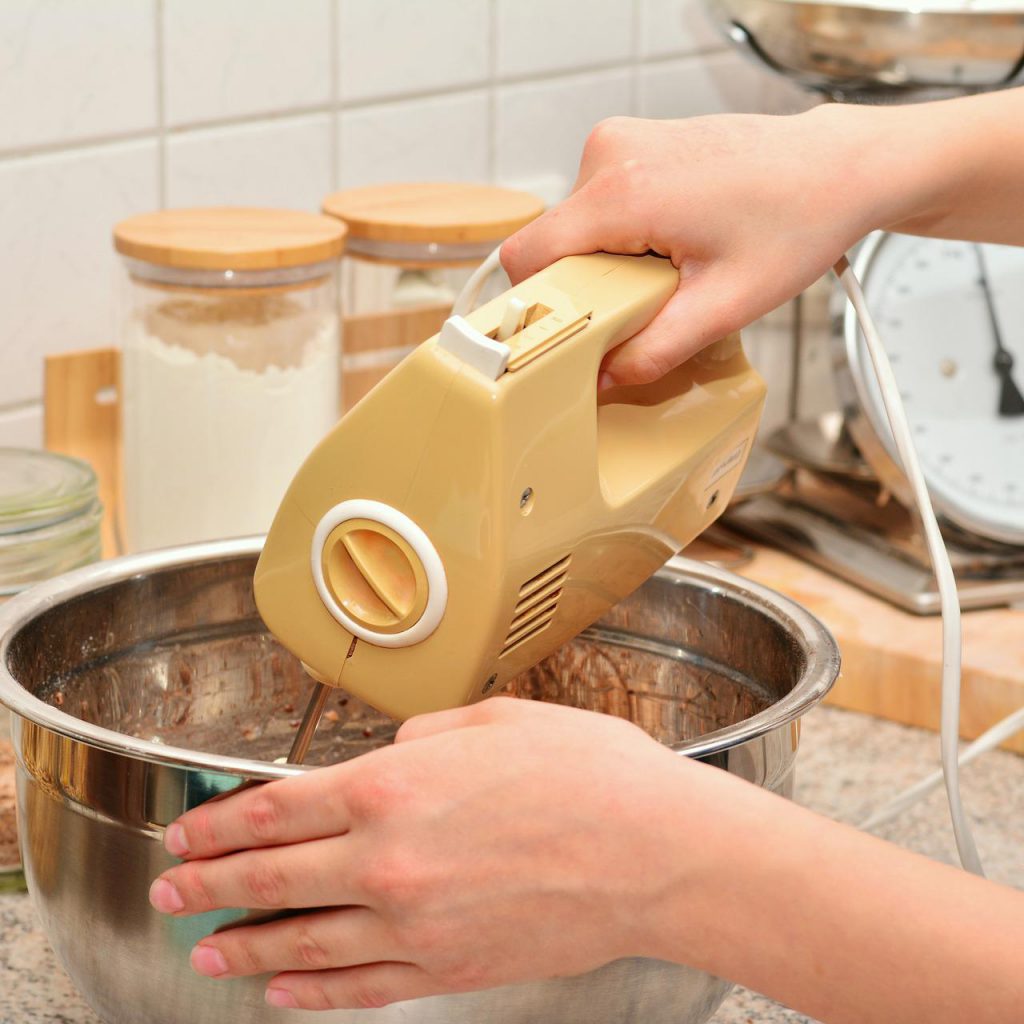
Hand mixers are designed for whipping creams and liquids while the hand blender has a wider range of uses. You can whip — even though with less efficiency — grind, crush, puree, and chop ingredients with a blender. At low speeds, you can chop up greens to make a salad or increase the speed and make oatmeal, mousse, or mashed potatoes.
The hand mixer is equipped with one or two whisks that rotate while the blender is equipped with a paddle blade and interchangeable nozzles. You need to be especially careful when using and cleaning a blender because its blades are usually very sharp.
One of the upsides of using a blender is that you can immerse it in pans without worrying about spills. With a hand mixer, you have to be more careful and use a mixing bowl that’s deep enough to prevent splashing the mixture all over the kitchen.
Both hand mixers and immersion blenders mostly require you to plug them in, but some models can work independently with a battery. This feature makes manual models more convenient and compact compared to their cabled competitors. However, you need to make sure that the device is charged enough, or else you might have to postpone your project.
Over and Out!
When it comes to mixing ingredients for delicious recipes, an immersion blender or a hand mixer are two of the most useful kitchen tools for this purpose. An immersion blender is the one you should grab when you need to bash, puree, and chop, while a hand mixer is perfect for whipping up smooth batters.
Some immersion blenders come with different attachments, such as a whisk for whipping cream. If you get a solid one with double whisks, you can actually replace your hand mixer with your immersion blender to save space in your cupboards.
Keep in mind that your hand mixer or immersion blender isn’t very suitable for heavy-duty mixing tasks, such as kneading dough or mixing large batches of cake batter. If you often bake cakes, cookies, and bread, you need a stronger ally in the kitchen, such as a stand mixer.


